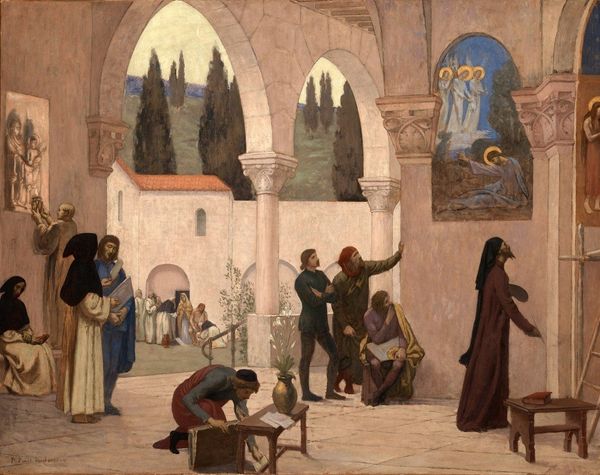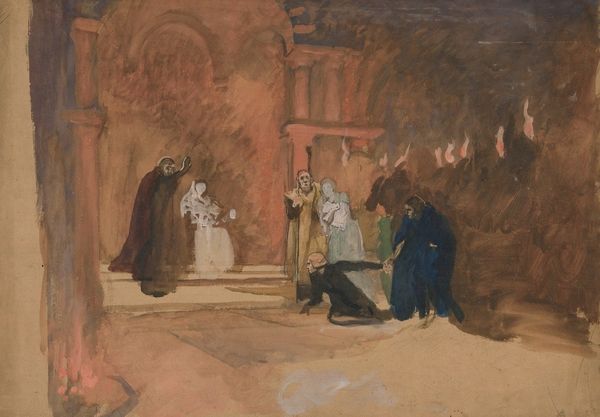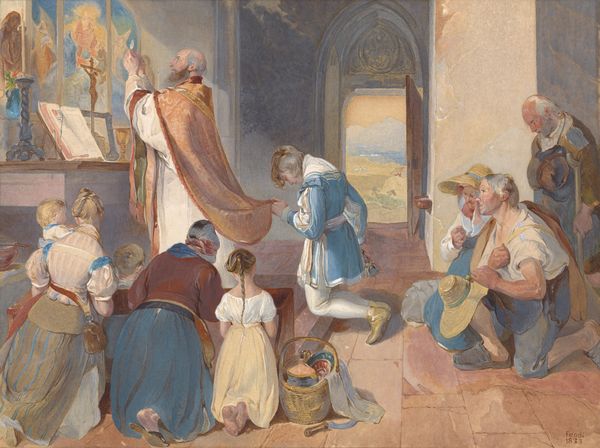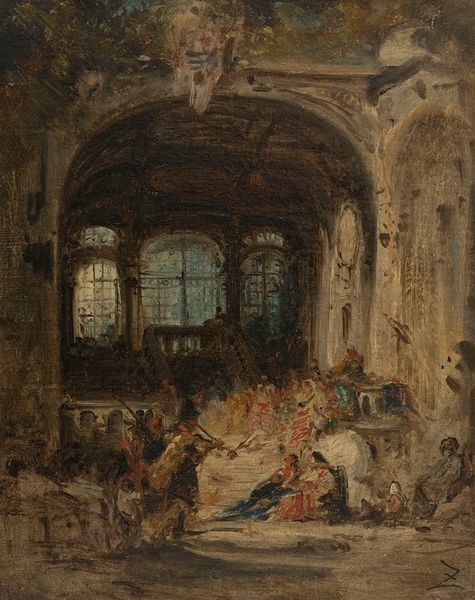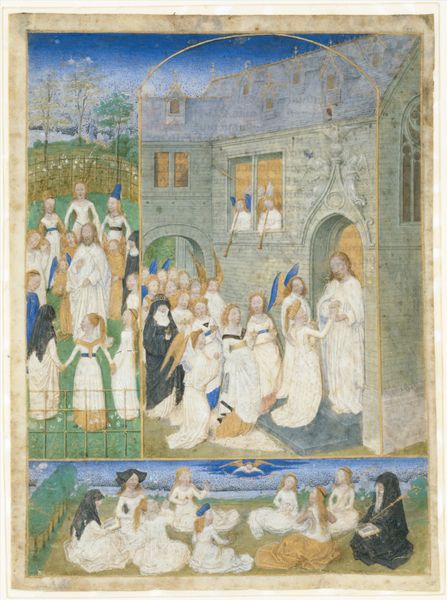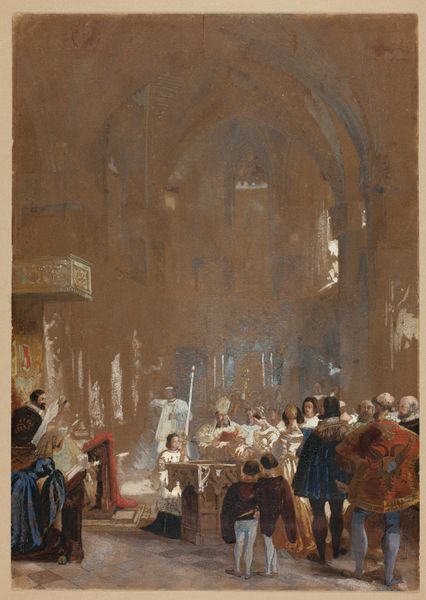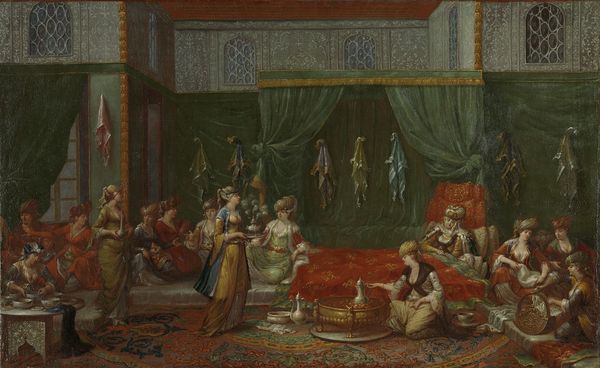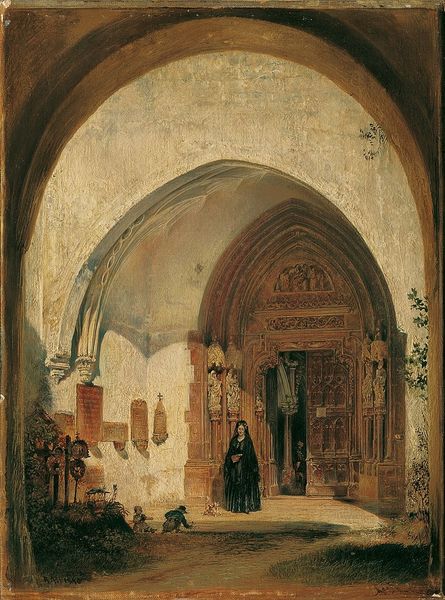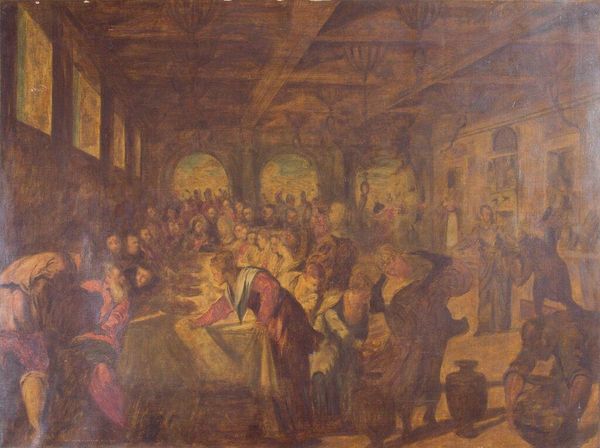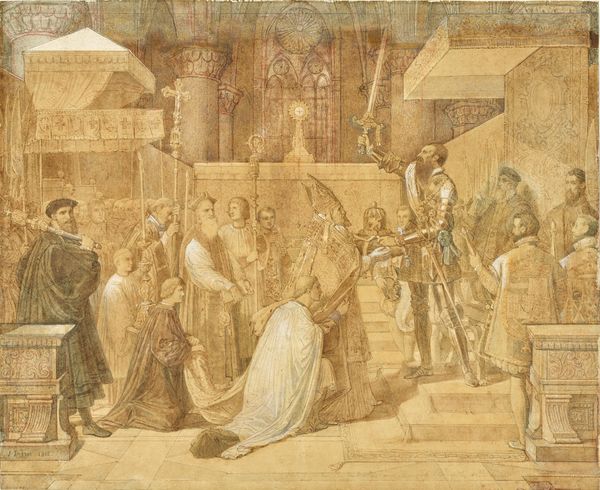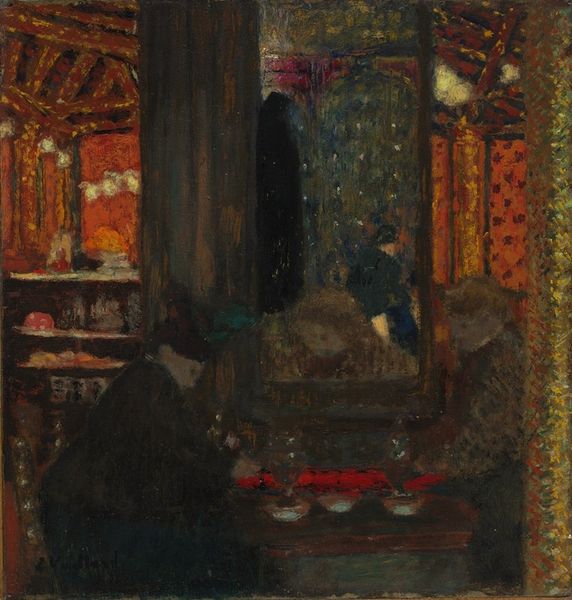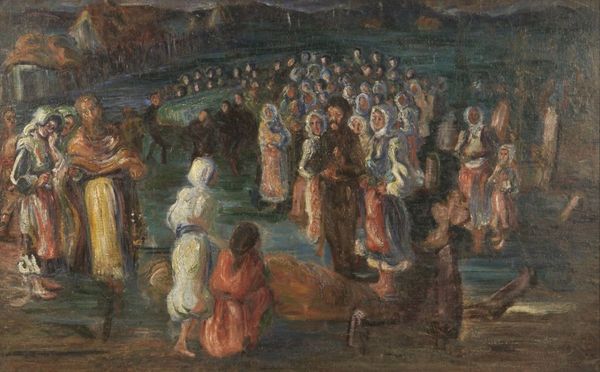
drawing, watercolor
#
drawing
#
narrative-art
#
landscape
#
figuration
#
oil painting
#
watercolor
#
symbolism
#
history-painting
#
academic-art
Copyright: Public Domain: Artvee
Curator: Let’s focus on Pierre Puvis de Chavannes’ "Christian Inspiration," a drawing created between 1883 and 1886. Its tranquil and almost dreamlike quality really strikes me immediately. What are your first thoughts? Editor: There's a textural roughness here, almost like faded fresco. I am very curious about how the architecture and figures have been realized—the actual layering and build up of material. The scene evokes both industriousness and reflection, doesn’t it? Curator: Indeed. Observe how the architectural space—the arches, the courtyard—functions as a stage. Figures are arranged deliberately, some engaged in what seems to be craftsmanship, while others gaze upward at an unseen source of inspiration, a window no doubt containing something of vital spiritual, artistic interest. Editor: Look at the way light and shadow interact here; see the deliberate materiality! Notice, too, how the labor represented affects the image overall. Someone is sawing wood! I wonder how that kind of practical skill influences the work, compared to the "divine inspiration". Curator: Precisely. It's this interplay between the mundane and the ethereal that defines the work. Note how he contrasts the soft watercolor washes with sharp, decisive lines. There's a clear hierarchy in representation, with the inspired scene receiving more attention to detail. Editor: The contrast highlights class divides and means of production for that era. I wonder about the type of watercolor pigments used at the time and how accessible such materials were for different creators. We need to consider the means by which this image came into existence. Curator: That context certainly adds another layer of interpretation. I think we cannot divorce ourselves from its structure either: Chavannes uses spatial arrangement to guide the viewer’s eye, directing us toward that focal point of enlightenment, be it art, vision or anything else of that kind. Editor: It’s certainly food for thought about what constitutes creativity and "inspiration" when one considers material circumstances. Curator: I agree. It brings a rather intriguing perspective to our understanding of 19th century notions about creativity and artisanship! Editor: Indeed; and an image that really demands some further explorations beyond the canvas and pigments.
Comments
No comments
Be the first to comment and join the conversation on the ultimate creative platform.
